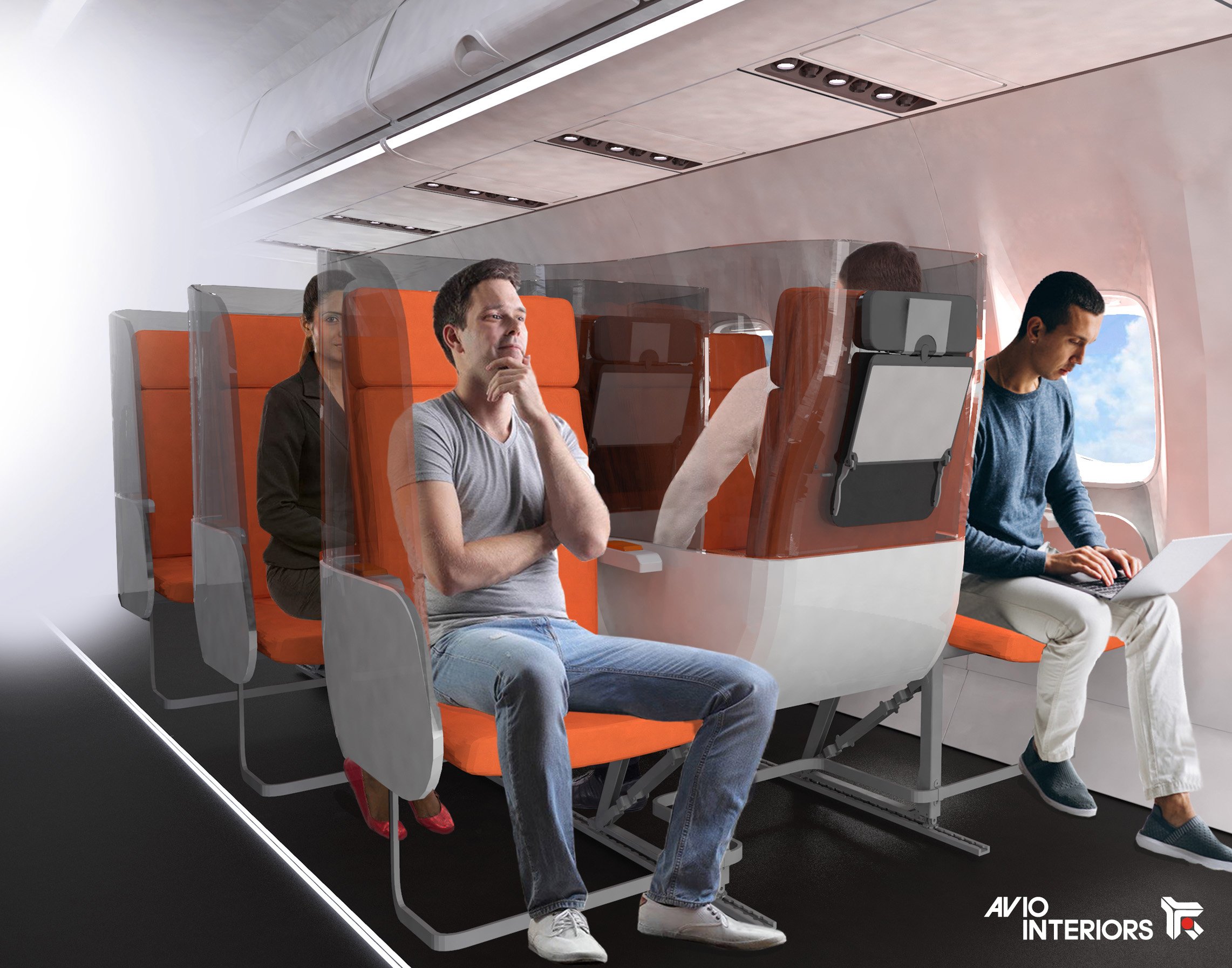Social distancing is a phrase that has been often heard during the current COVID-19 pandemic; but how can we do this on an aircraft? Aviointeriors, an Italian design firm, has created two new concepts of airplane seats for passengers to feel safer while flying.
Aviointeriors has filled their patent application and both designs can be applied to either narrow or widebody aircraft.
Janus Seat
Aviointeriors’ first concept consists of the reverse position – facing backward to the direction of flight – of the centre seat “to ensure the maximum isolation between passengers seated next to each other”.
With the Janus Seat, all the 3 passengers are separated with a shield that isolates them from each other. Each passenger has their own space isolated from others, including from the people walking in the aisle.
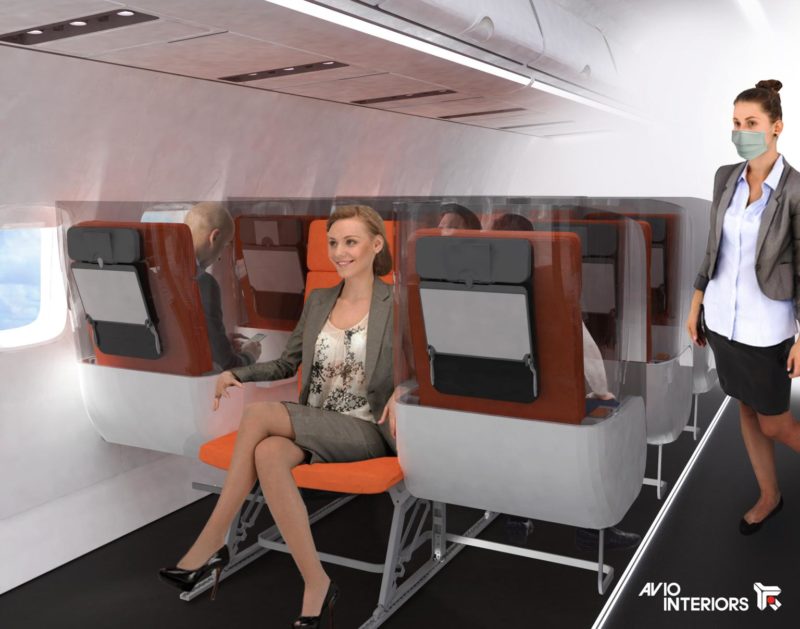
Each seat is surrounded by a large transparent shield, this prevents the propagation of breath to and from other passengers in the row. According to the manufacture, Janus is made of easy cleaning and safe hygienist materials.
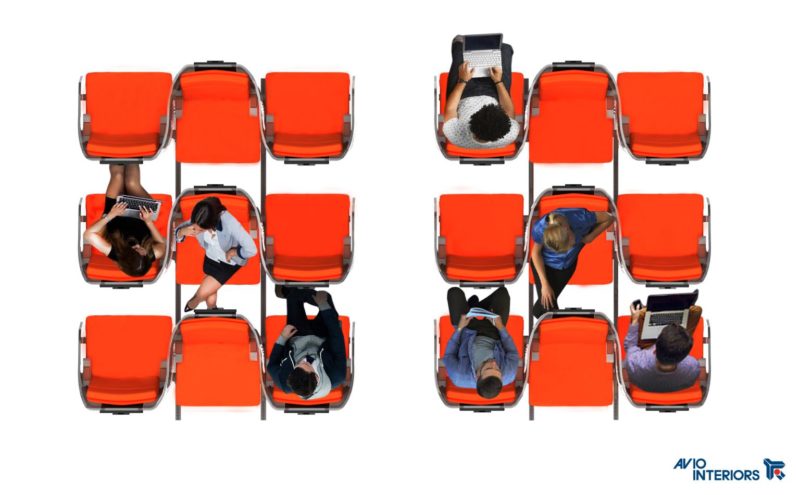
Paulo Drago, Chief Executive of Aviointeriors, said to FlightGlobal that the Janus seat row would occupy no more space than a traditional configuration. Also that it would not interfere with escape regulations or require deep cuts in overall capacity.
Drago states that Janus’s product can be delivered in under 6 months, if there are sufficient orders.
Glassafe
Aviointeriors’ second concept is called “Glassafe” and consists of a shield around the passenger’s head.
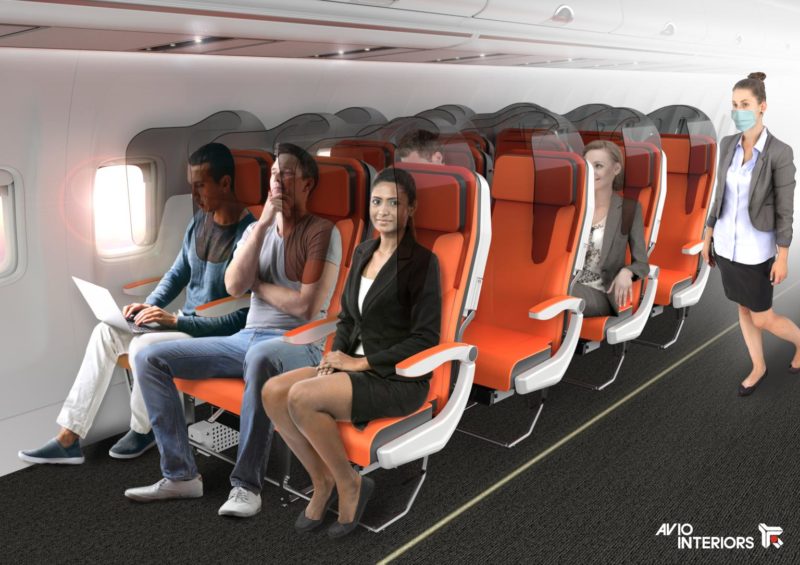
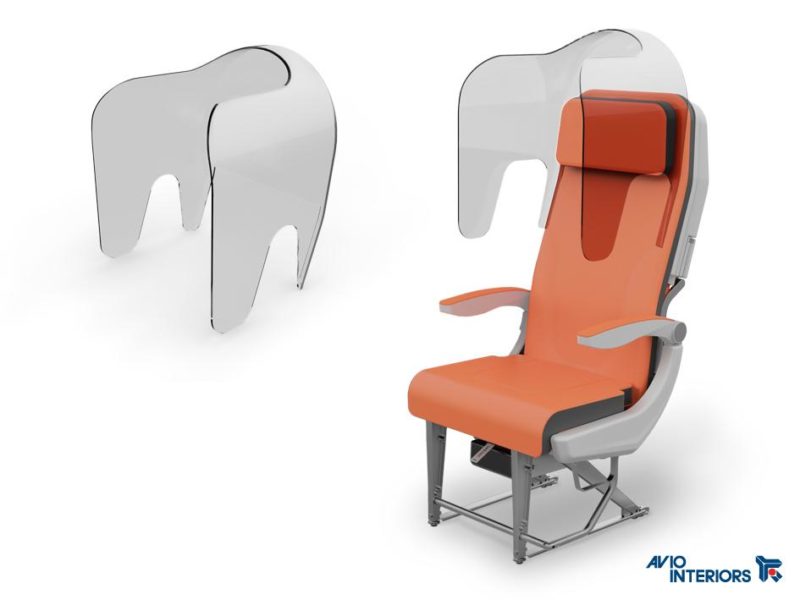
This concept is more economical for airlines than the previous one. The shield can be installed on existing seats “to make close proximity safer among passengers sharing the same seat row”.
Like the Janus seat, Glassafe is made of a transparent material to make the cabin more harmonious and aesthetically light. It will minimise contact and air exchanges between passengers, thus reducing the probability of contamination.
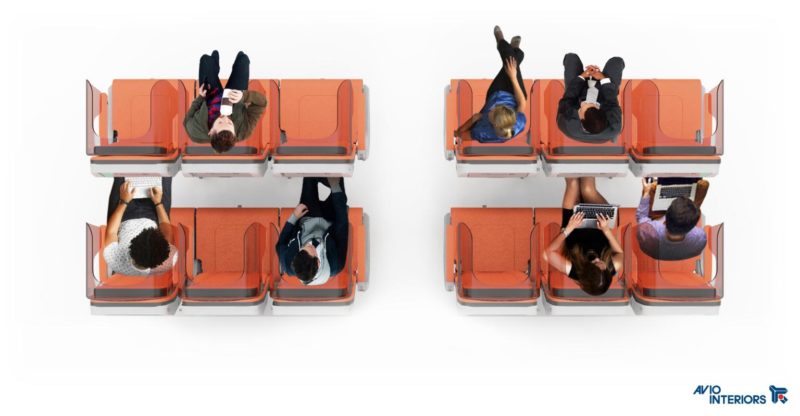
Aviointeriors says that Glassafe is supplied in various executions, with fixing systems that allow easy installation and removal.
In a declaration to FlightGlobal, Drago says that this modification is “quicker, cheaper and less invasive” and can be delivered within two months.
Article Sources: FlightGlobal and Aviointeriors


